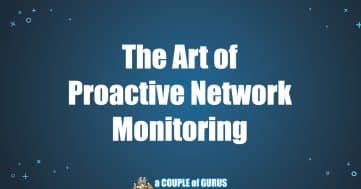It’s Time for Your Technology to Grow Up
This is the final article in my three-part series on how to correctly budget for technology.. Two months ago I wrote about Three Factors to determine a proper Technology Budget, and then last month we briefly discussed the 3 Questions every business owner should ask their CIO consultant. This month I want to dive further into the topic and talk about the importance of integrating your Technology Plan into your 5-Year Plan.
Start with the end in mind.
Most of you would agree that every business should have a plan; an idea of where you want your business to be—the sales numbers you want to hit, the operational systems you want set in place, or the growth you want to achieve. Business owners typically include a long-term plan reaching out three to five years, and the same should be true for your technology plan.
A business’s 5-year plan needs to be communicated to their acting CIO or their Technology Advocate. Whoever they are, that person needs to have that information so they can craft an infrastructure that is going to support the initiatives of the five-year plan. When businesses don’t plan their technology around their 5-year plan, they end up re-spending the same amount of money down the road because they didn’t realize that their initial technology plan didn’t line up with their business plan. If you don’t start your technology plan with the end in mind you will end up spending twice as much as you expected and it will ultimately affect your bottom line.
Integrate your Technology Budget into your 5-Year Plan.
Two months ago I covered the three factors in determining a proper technology budget: Asset Replacement (Year-to-year growth from the previous year and which assets are expiring next year), Human Capital Growth (All potential human capital growth expected) and Strategic Alignments (Technology that can automate/optimize current business processes). Then I suggested when you figure out those costs, double them. This is important because most people plan for the costs of the hardware and software needs but fail to consider the implementation and maintenance costs of those technologies. Over the years I’ve noticed there seems to be a loose correlation to the costs of, say, $15K worth of hardware/software and $15K worth of implementation and maintenance of those technologies.
To further prove my point, Gartner releases a report every year detailing the total lifetime cost of a desktop PC. In their study done in 2008, they reported that for a PC that has an initial hardware & software cost of $1200, the total cost of that computer was close to $6000 (A managed PC had a total cost less than $4000, demonstrating the value of desktop management.) That is a 500% increase in the cost of a PC from initial cost to lifetime costs. Most business owners do not consider the lifetime costs of their equipment or the upgrade costs of their software. When you properly budget for you technology and integrate it into your 5-year plan, you will see a considerable improvement in your bottom line. Wal-Mart did.
It’s Time for Your Technology to Grow Up.
Every small business has that entrepreneurial boot-strap mentality. They start their business with what they have and grow it as fast as their limited resources allow. They don’t have the resources to invest in proper infrastructure so they get by with what they have. But every business must reach a point where they realize the need to invest in a business-class technology solution to realize further growth.
I mentioned Wal-Mart because they are a great example of how technology drives the bottom line. They have done this by investing resources in technology that helps them analyze their data. For example, Wal-Mart found out that during natural disasters people tend to buy more olives. As odd as that may sound, you can bet that Wal-Mart stores on the East Coast are currently stocking up on olives in the aftermath of Hurricane Sandy. They know this because they took the time to integrate their technology budget into their 5-Year plan and find out which technologies they should invest in to increase their bottom line.
There is also a point small business reach when they realize by not leveraging technology they have a big impact on their 5-Year plan. No one understands the value of a backup until they lose valuable data when a hard drive fails on them. You experience the pain once and that’s how you learn. I encourage you to sit down with your CIO or Technology Advocate, go through your 5-Year plan, review your Technology Budget and make sure you are investing in the technology that is going to support your core business processes. Then you can rest assured knowing your business is being supported by the technology it needs to be healthy and grow.




